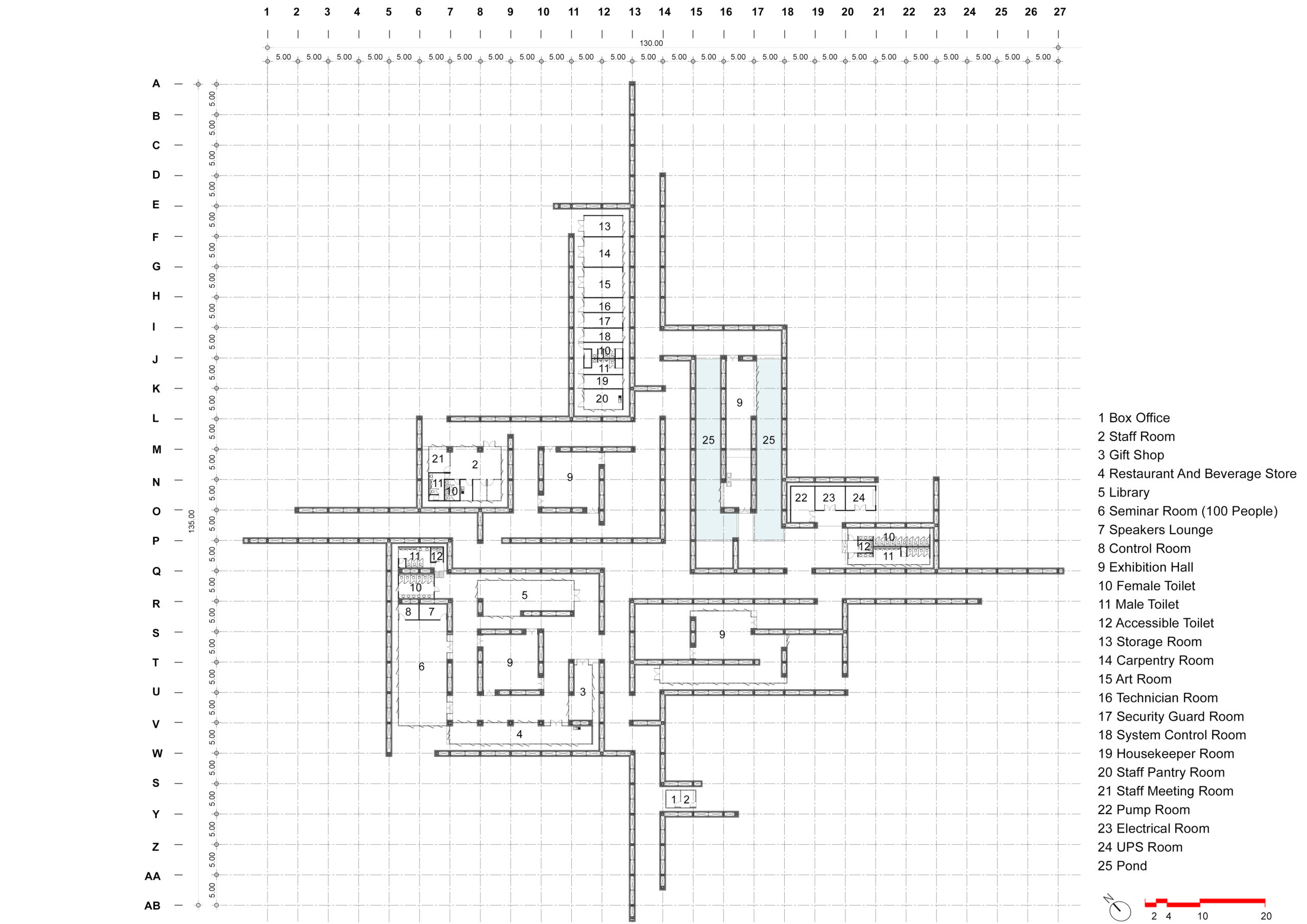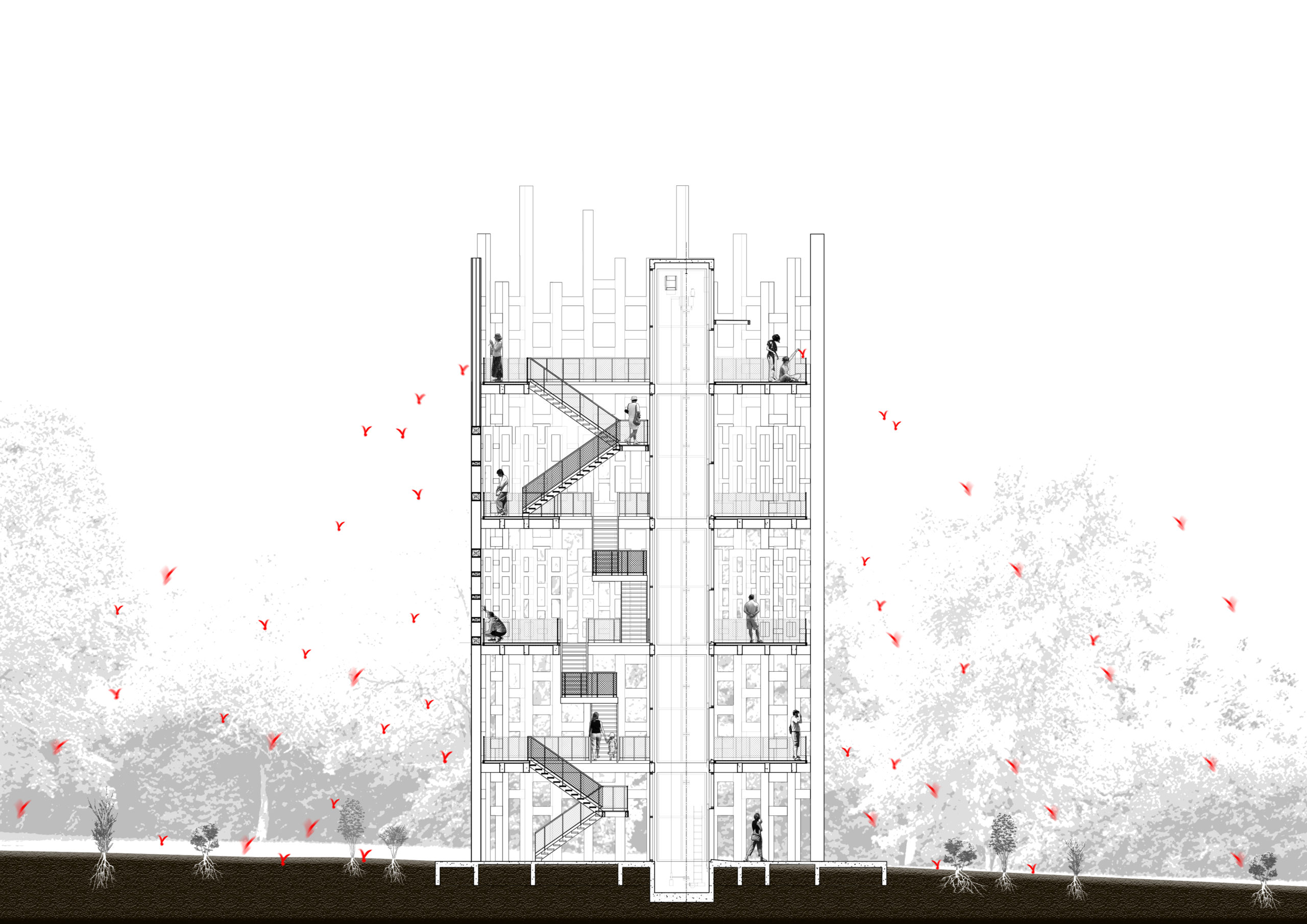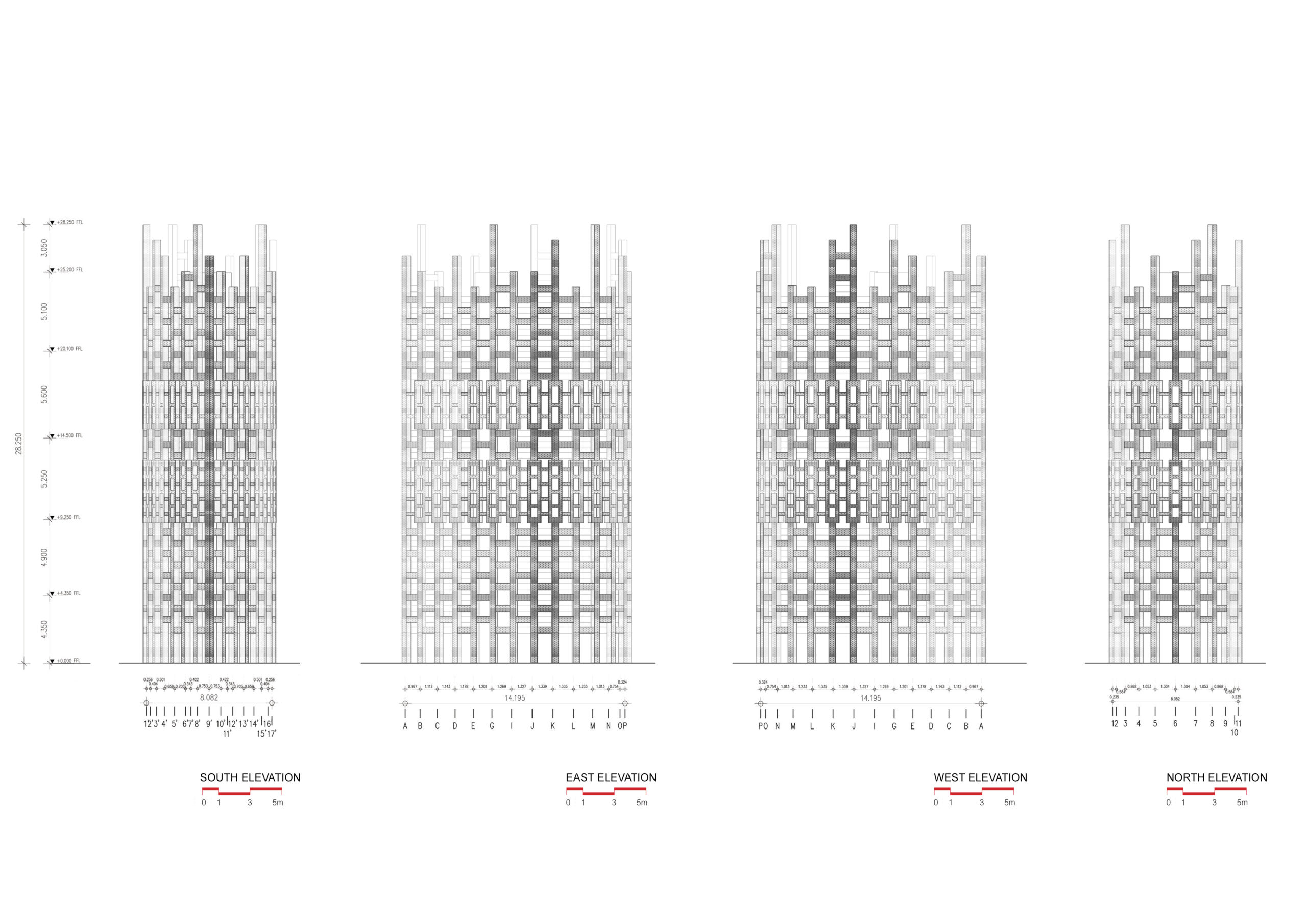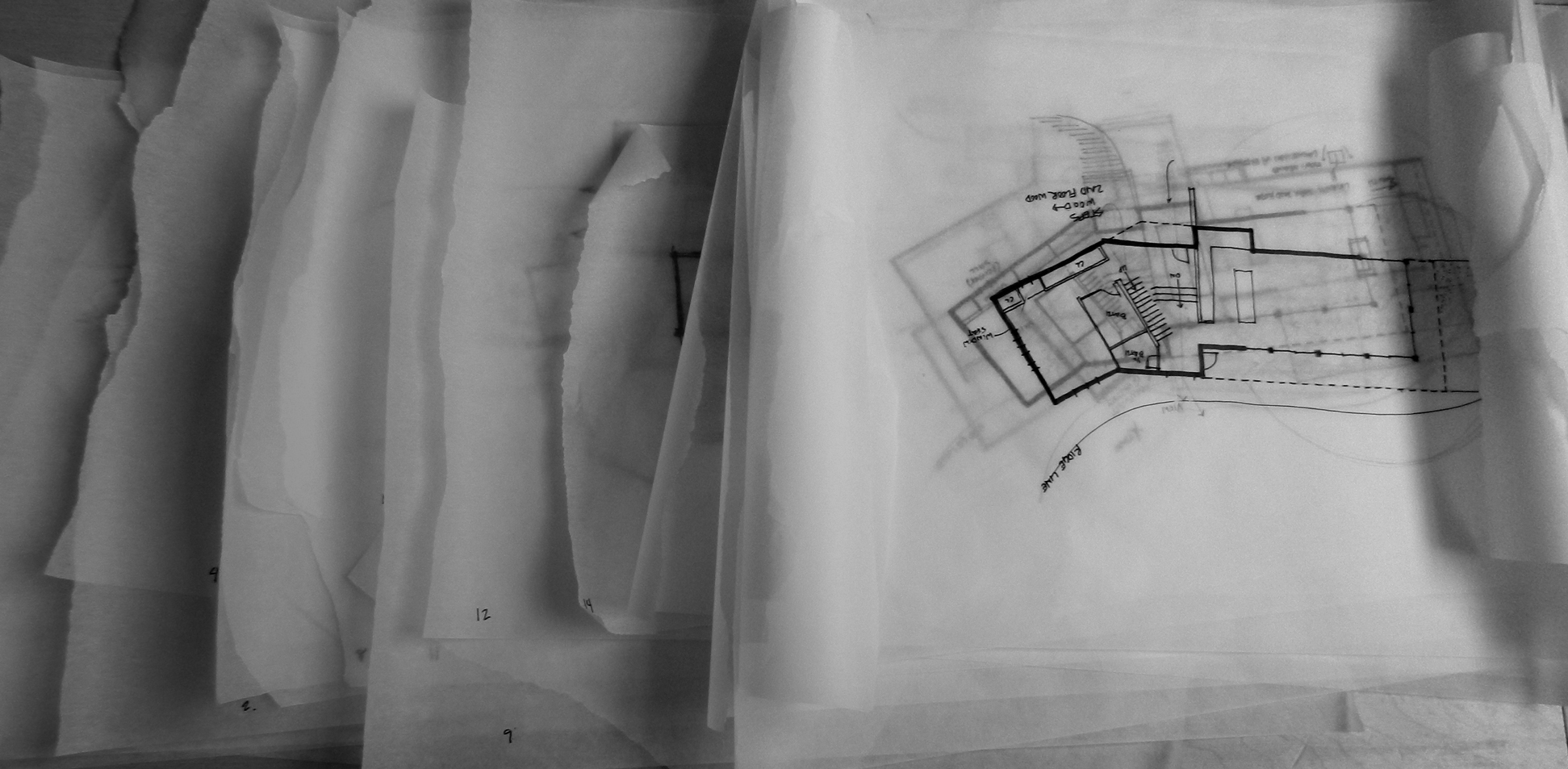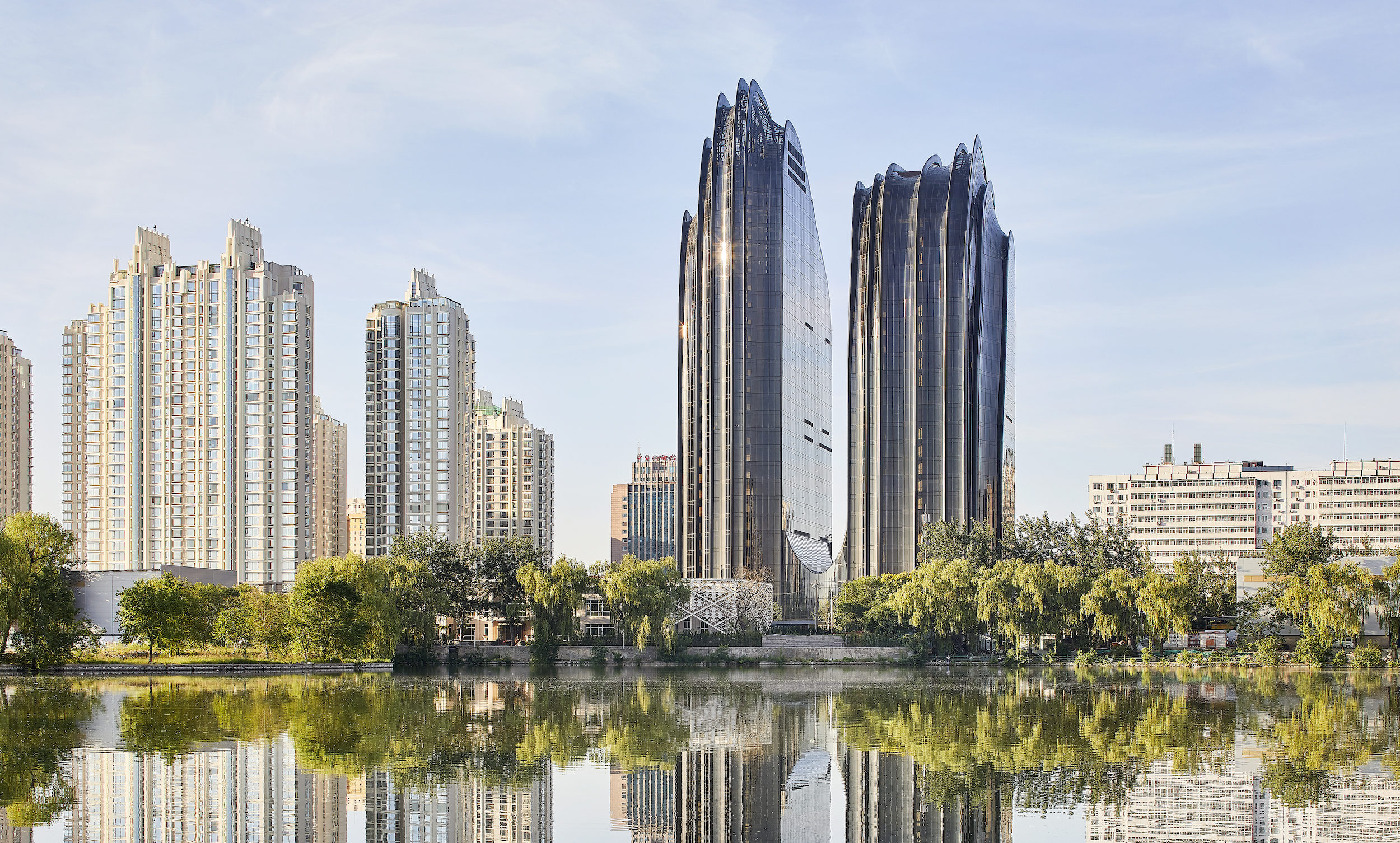Architects: Want to have your project featured? Showcase your work through Architizer and sign up for our inspirational newsletter.
Since 2015, a special construction project has been underway in the north eastern province of Surin, Thailand. Known as Elephant World, the complex consists of three distinct programs: a multi-use cultural courtyard, a courtyard-laden museum and an iconic brick tower.
Elephants are an integral part of Thai culture and hold a special relationship with the Thai people. This is most prominent in the village of the ethnic Kui in Surin, where elephants have been considered family members and lived under the same roofs as humans for centuries. However, the strong bonds of this relationship have been tested in recent years, as the economic growth, extensive deforestation and drought have displaced the local elephant population, who were unable to adapt to the accelerated rate of environmental destruction.
Recognizing the devastating blow to a beautiful culture, Elephant World is a governmental project seeking to provide sustainable and appealing living conditions for both the Kui and their elephants, in a concerted effort to bring them back to their native lands. The design was led by Boonserm Premthada, founder of Bangkok Project Studio, who champions local labor, construction methods and materials in his projects. Here, we explore each of these three unique but interconnected projects in more detail.
Elephant Museum
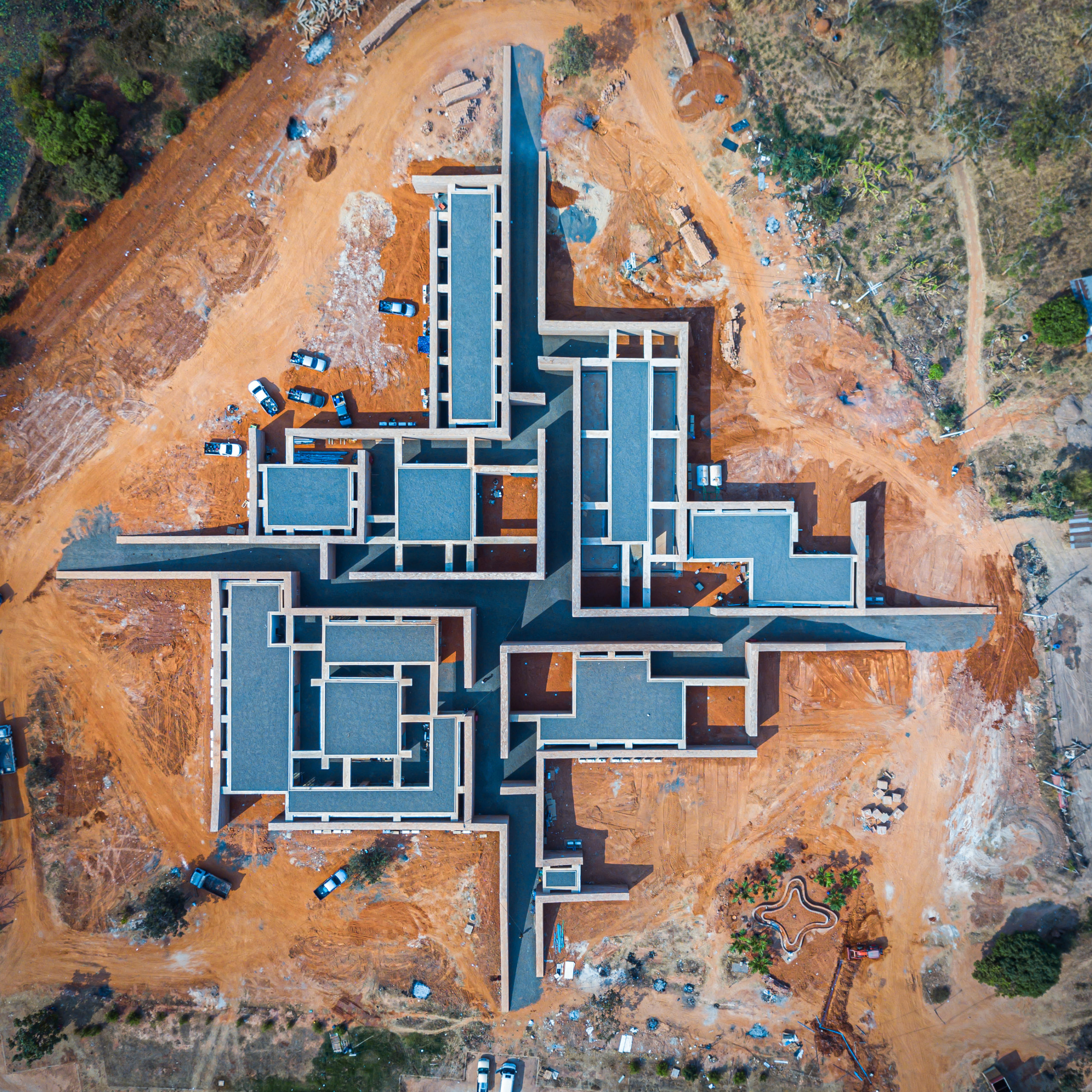
The Elephant Museum by Bangkok Architecture Project, Surin, Thailand. Images by Spaceshift Studio
While most museums prioritizing the display of objects, the mission of the Elephant Museum is also convey the voice of the Kui and their elephants; to communicate the unique familial bonds between them and to transmit the devastating impacts of animal exploitation.
The building’s distinct footprint and profile stand out on the sprawling, treeless site. Slopping and interlocking in an almost labyrinthine layout, the museum’s curved walls vary in height, their spacing and scale seemingly take into account the size of a Thai elephant. This unique approach creates a bevy of unique courtyard spaces that open off of the four exhibition galleries. Each distinct in shape and size, some contain little ponds, others are enlivened by reddish earth.
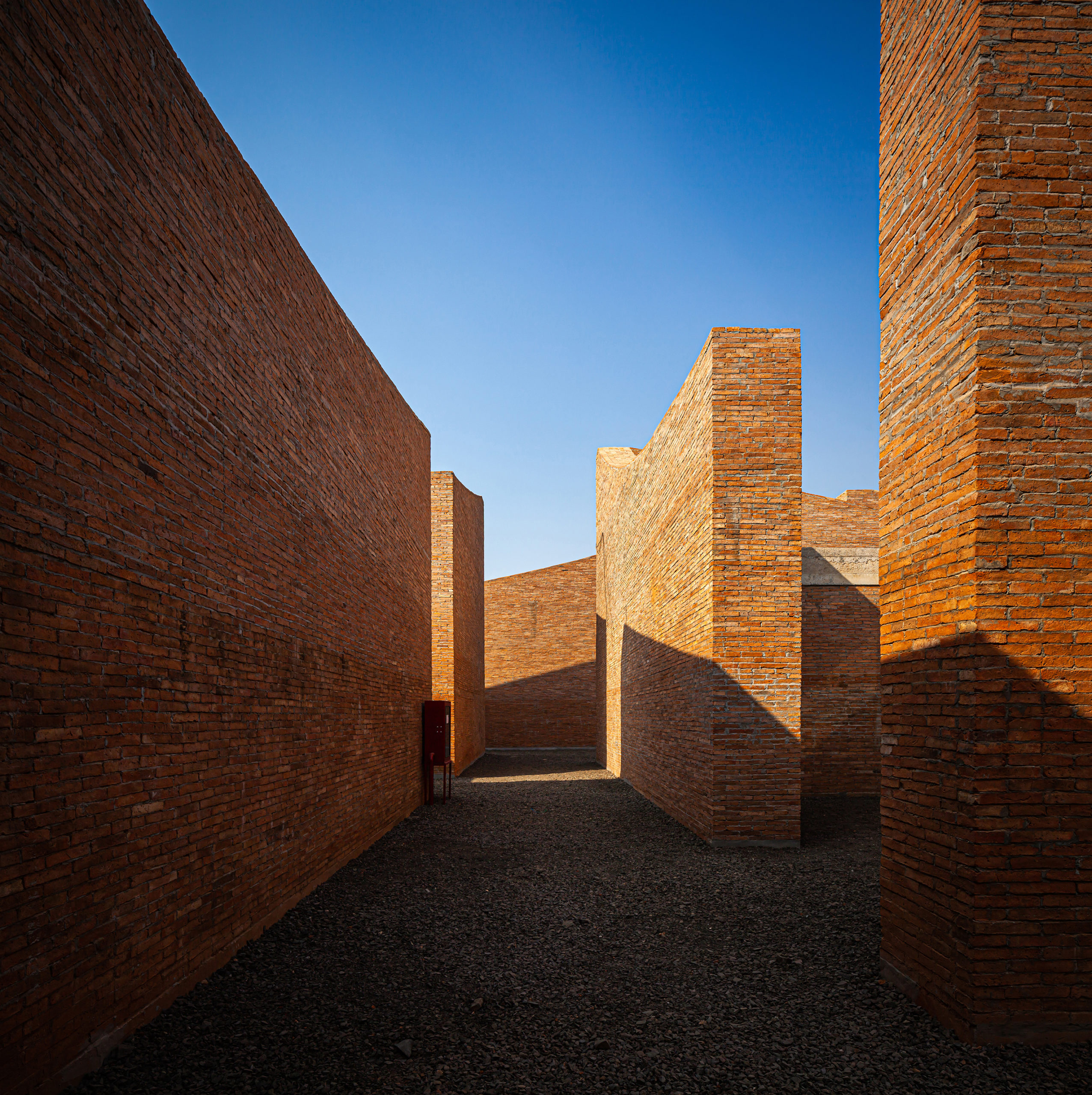
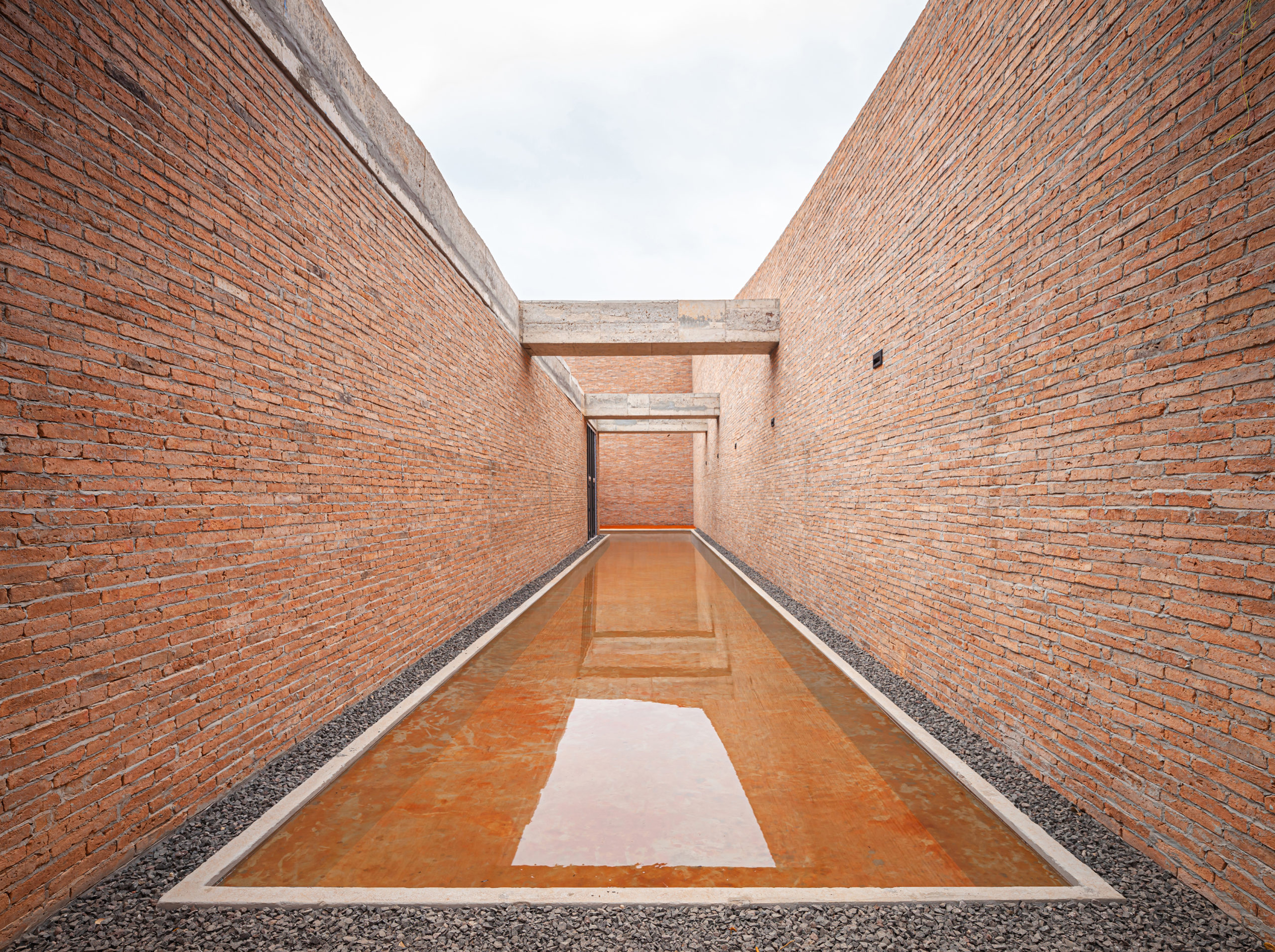
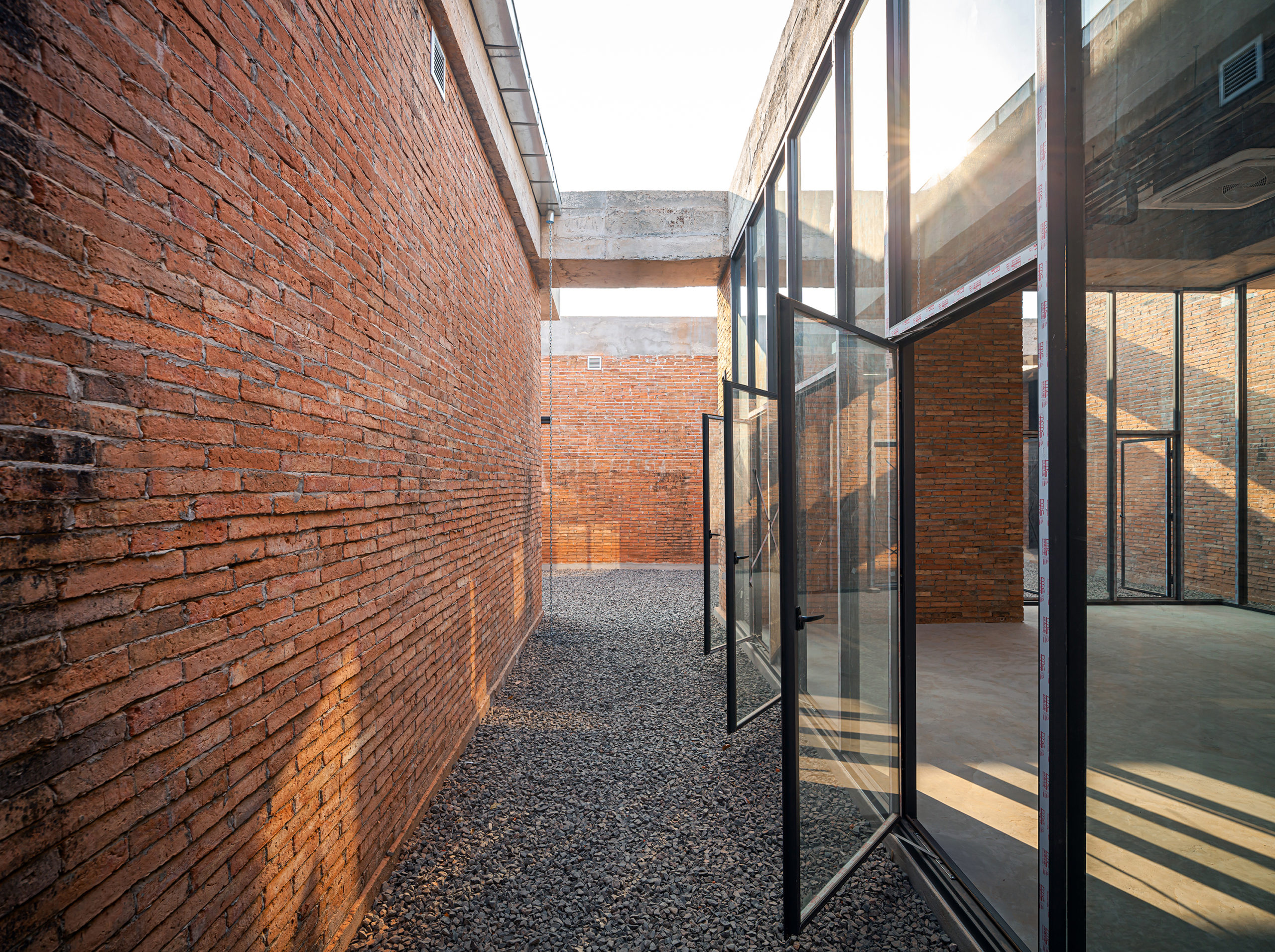
The Elephant Museum by Bangkok Architecture Project, Surin, Thailand. Images by Spaceshift Studio
In this way, the museum’s design aims to translate, architecturally, the spatial rhythms of the elephants’ daily routines, as they move from the shelter and houses to the pathways that lead to bathing rivers and their dirt playgrounds. In this regard, sun is also a vital aspect of the space and is channelled to enhance certain areas of the building while dimming others, creating various moods throughout.
A material perspective is not inconsequential. The museum is built from over 480,0000 handmade clay bricks, fired locally using a longstanding technique. The construction process bolstered the local economy, providing income and jobs, also valorizing the material. In this sense, the material decision reinforce the raison d’etre of the Elephant Museum: it is meant to “empower the Kui, the elephants, and the people of Surin..[e]ncouraging them to take pride in their heritage, and restoring the dignity of their beloved elephants once again.”
Cultural Courtyard
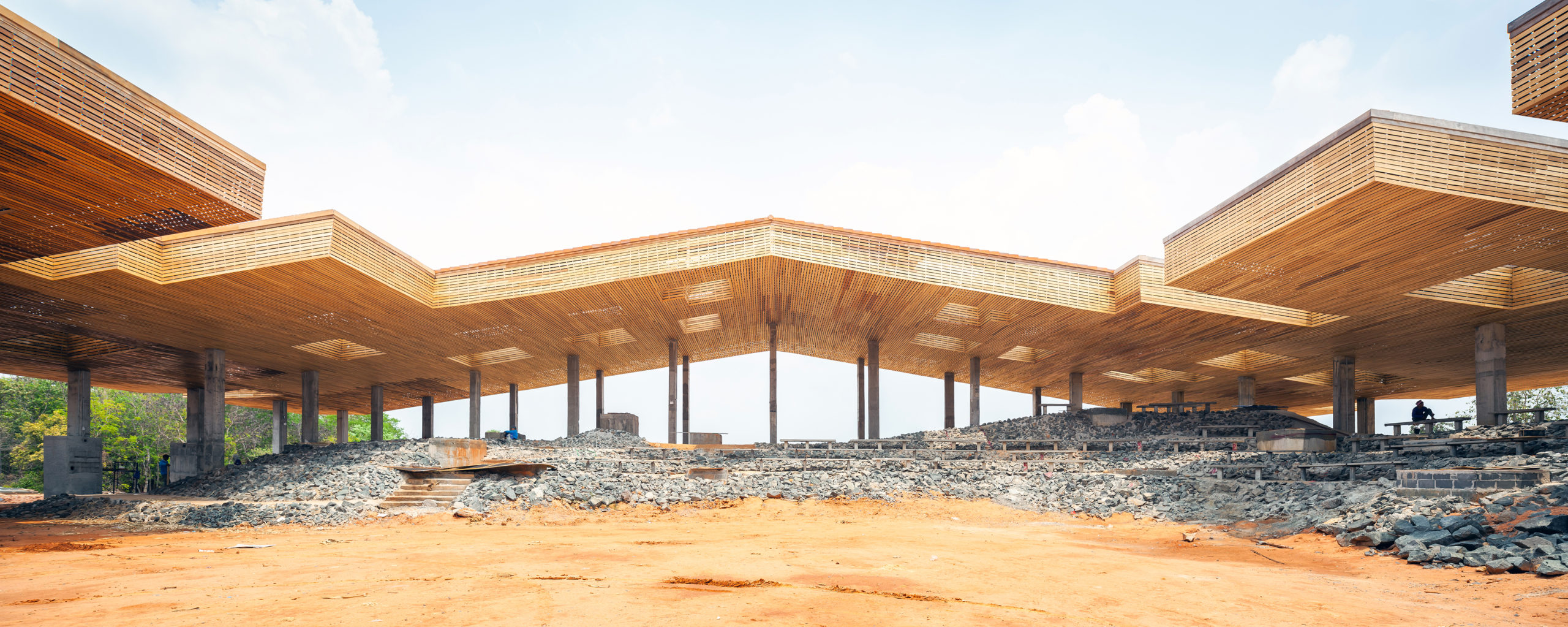
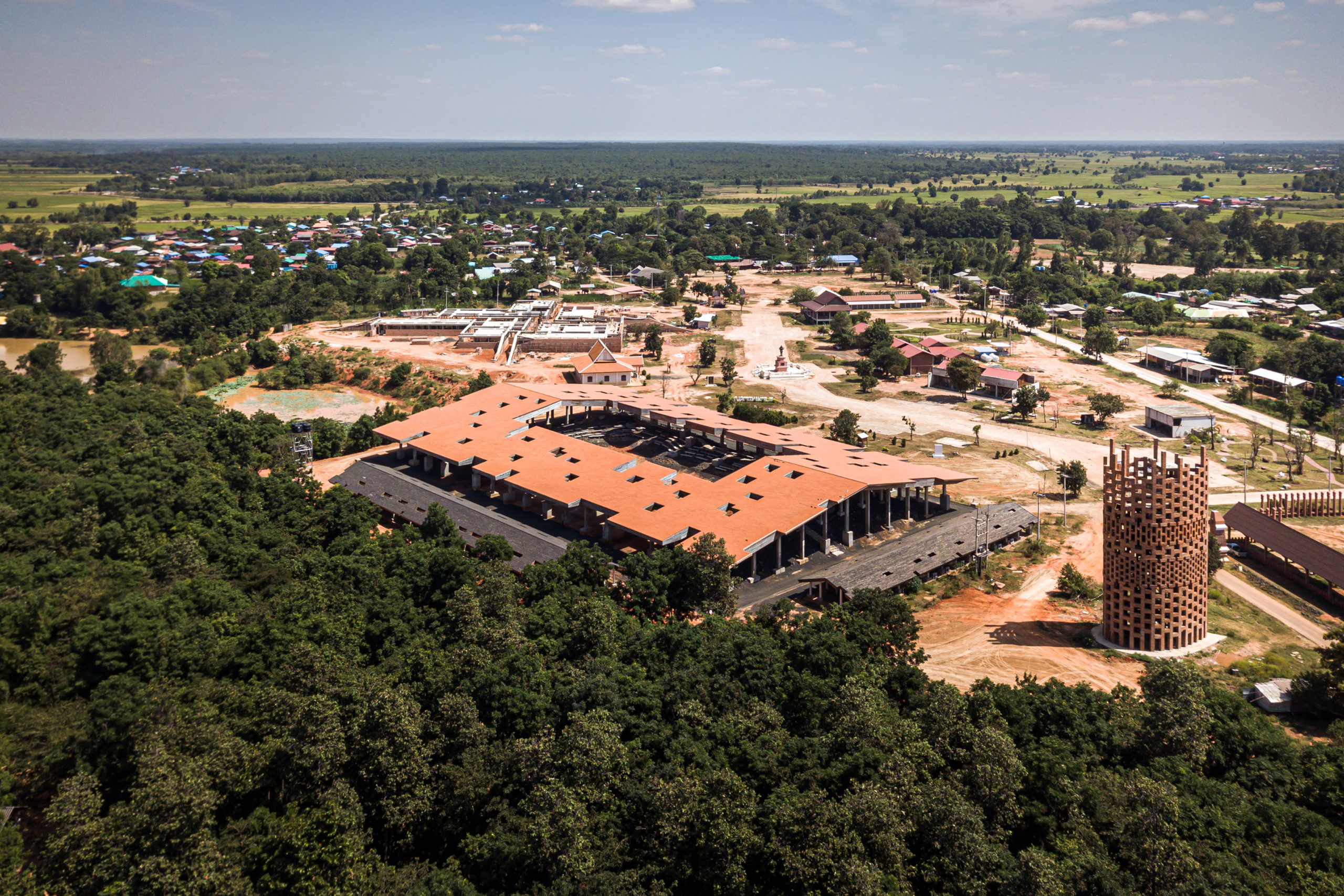
The Cultural Courtyard by Bangkok Architecture Project, Surin, Thailand. Images by Spaceshift Studio
Spanning out with a gentle slope, and extended roof covers a large, open-air area, demarcating a special area for cultural events and religious ceremonies, including birth and death rituals for both humans and elephants. The contrast between the 3-foot thick roof and the thin rectangular piers that hold it aloft is notable, and the low-lying profile ensures that the structure remains in sync with the nearby village. Meanwhile, the roof is punctured with rectangular openings at various points, which enhance ventilation of the open-are space and provide the elephants with views to the sky.
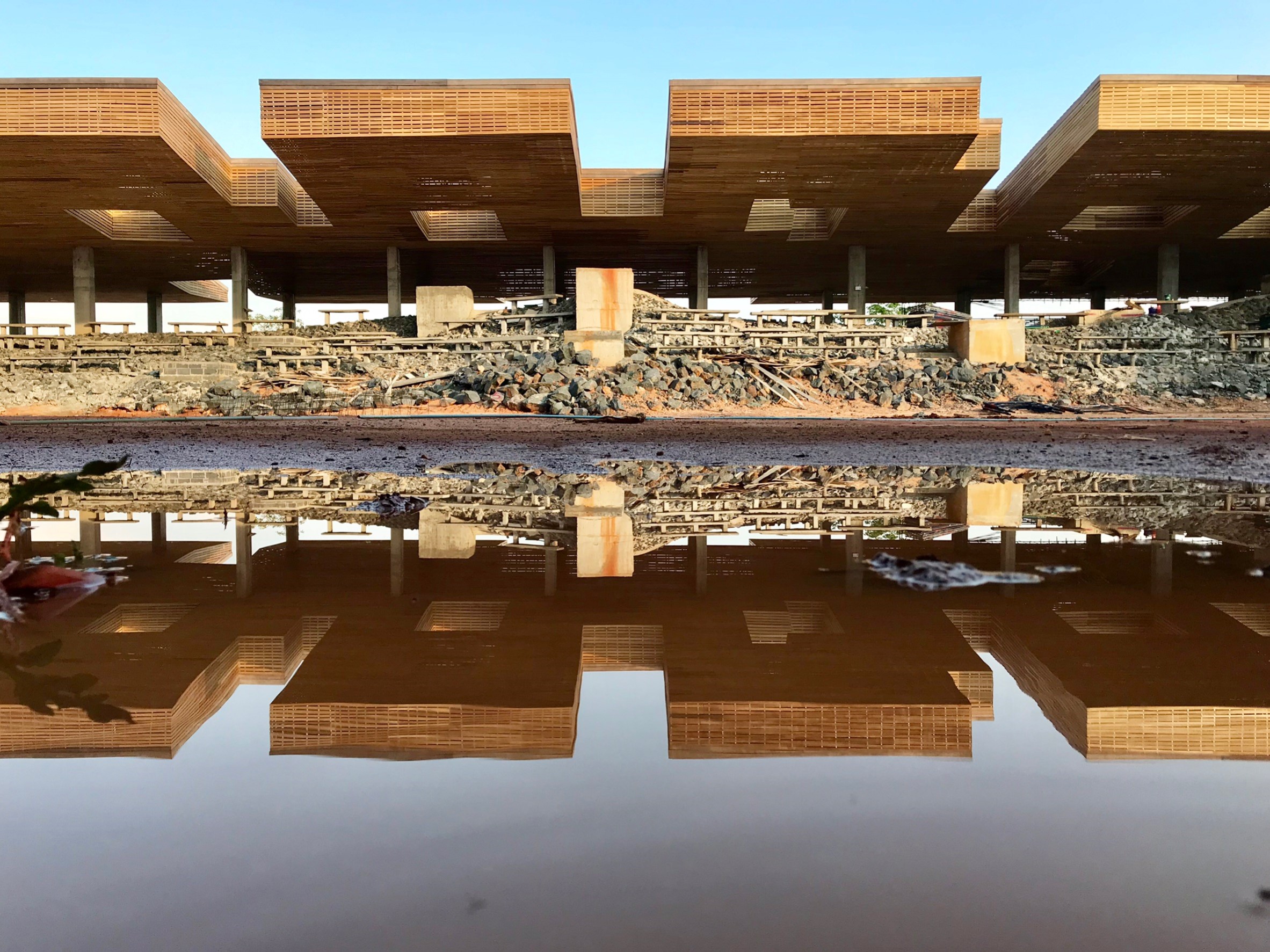
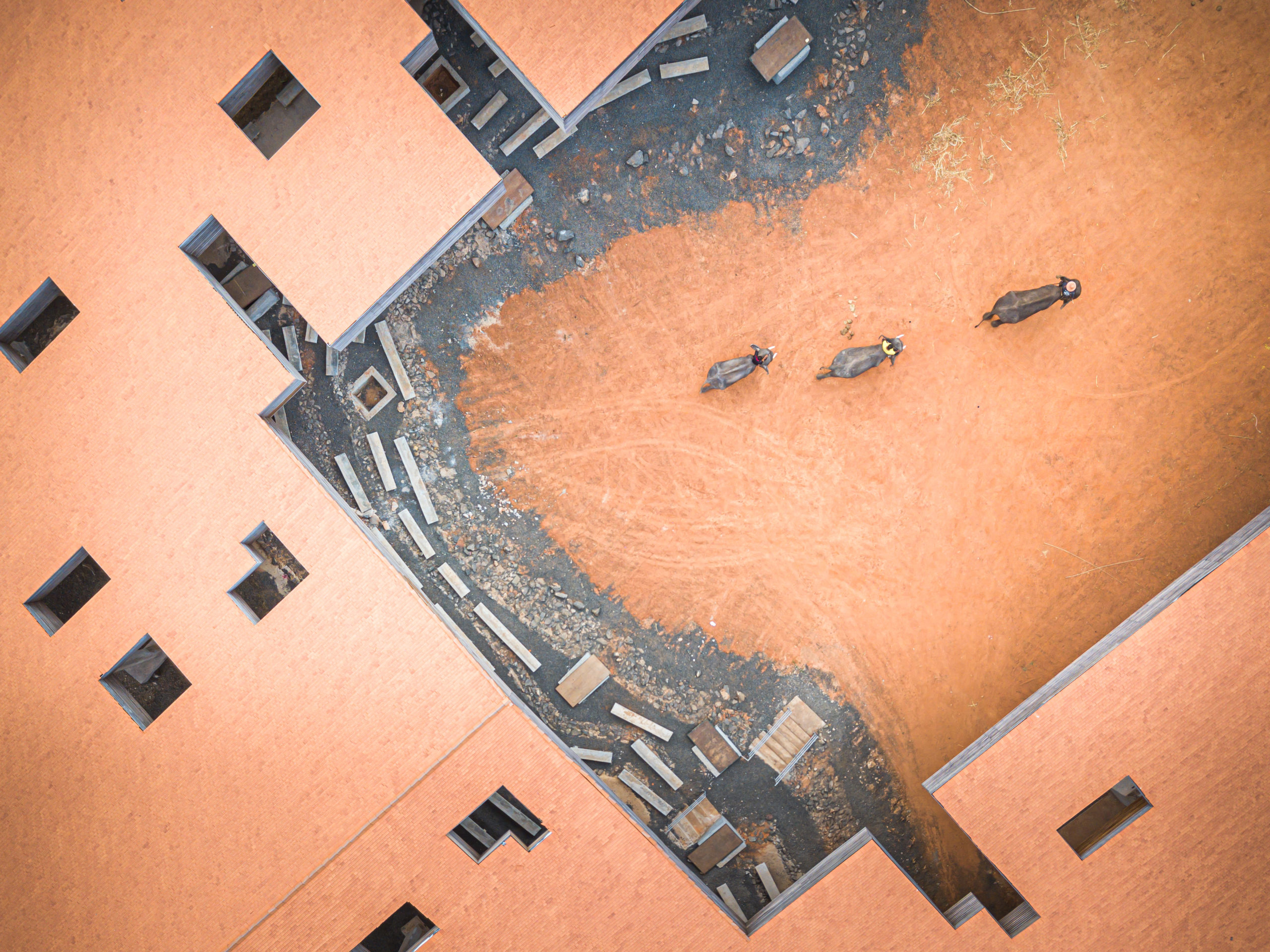
The Cultural Courtyard by Bangkok Architecture Project, Surin, Thailand. Images by Spaceshift Studio
The landscape bordering the sanctuary on three sides is composed of six mounds that add a protective barrier; the fourth side is left open to accommodate the large size of the elements. The mounds themselves are populated with a smattering of concrete benches that are capable of seating up to 800 visitors. An additional 42 concrete pots were scattered throughout, where trees will be planted as shade and food fo the elephants.
Elephants require vast quantities of water in order to survive, yet Elephant World is sited atop an arid plateau, 2.5 miles from the nearest river. To ensure that the 200 elephants living there are provided for, a rainwater collection pond was added to the site, the remaining soil relocated to the mounds, which are strengthened by basalt rocks, which were sourced from a site 40 minutes from the village. The extraction of basalt creates accessible water reservoirs; the material’s use in the project therefore helped created water access for the neighbouring district.

Sustainable coexistence was at the heart of the project; as the architects put it: “With new water sources resulting from the construction, moisture has returned to the barren land. The Kui can now care for the newly-planted trees, maintain the water sources and revive the forest. The bond between the two is the catalyst towards a sustainable future. In this future, they will live under the same roof again, just like their ancestors did.”
Brick Observation Tower
A 92-foot tall brick tower marks the border between the constructed area and forest. Its oval footprint and acute angle (on one side), are provisions aimed at reducing wind strength and diffuse the sun’s heat. Punctuated with an alternating pattern of 32X32 inch and 14×35 inch openings, visitors are offered fleeting glimpses of the surrounding landscape as they make their way up the steel mesh staircase at the tower’s centre. Upon reaching the top, the reward is panoramic vistas.
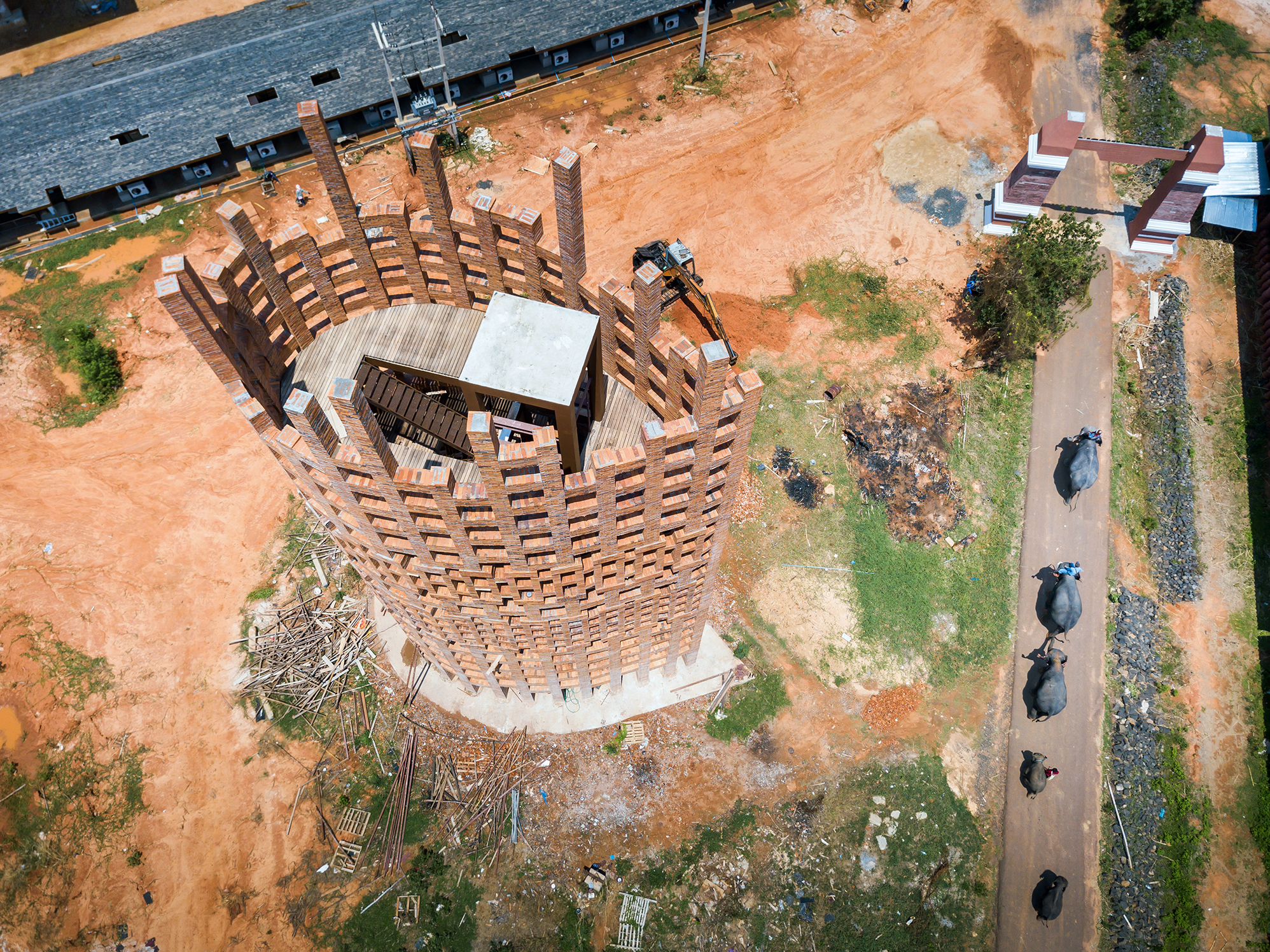
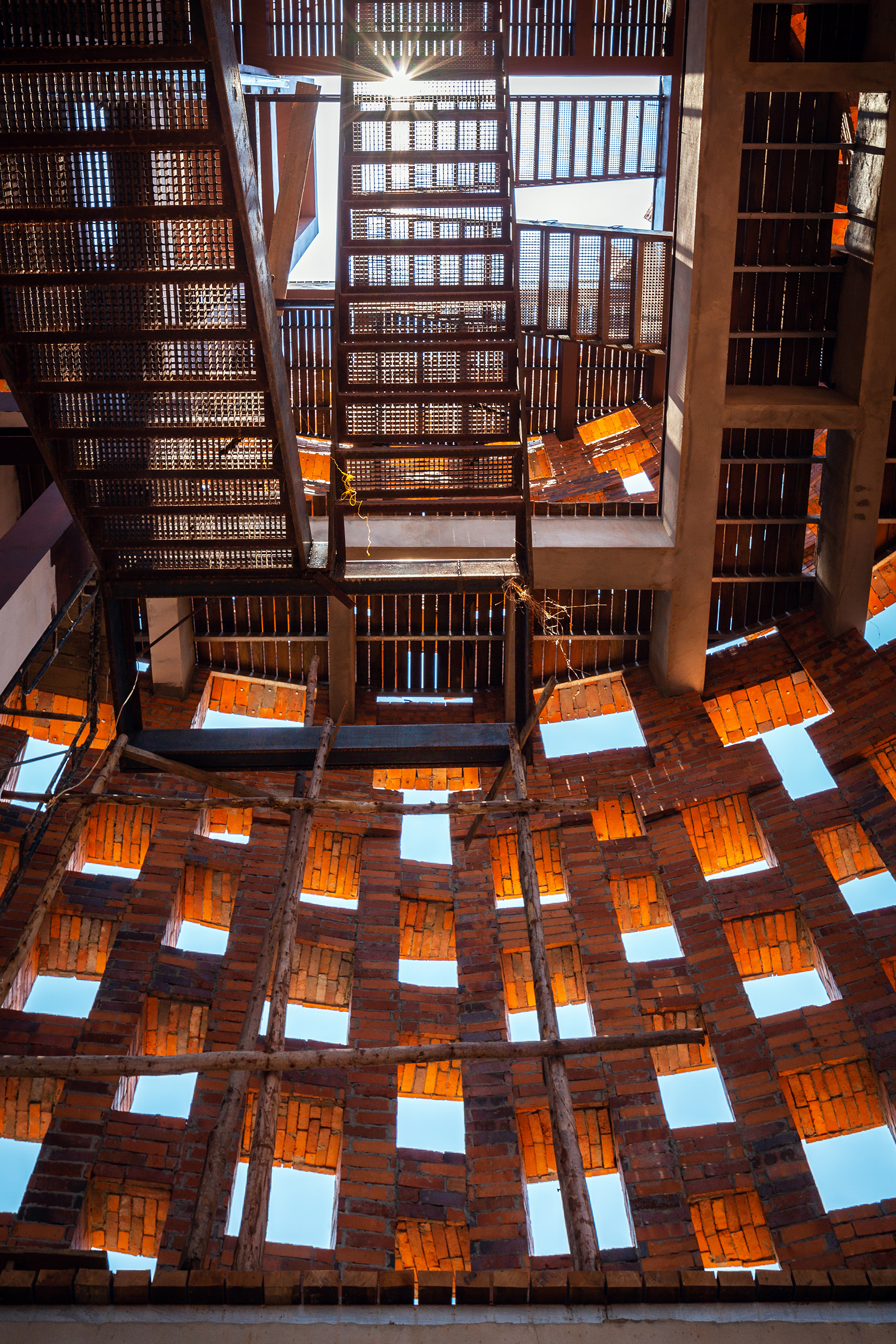

The Brick Observation Tower by Bangkok Architecture Project, Surin, Thailand. Images by Spaceshift Studio
As with the museum, the tower’s distinctive clay bricks were also made locally using earth that was dug in order to create a new water reservoir. With the water available, sowing seeds to replace the lost trees on the barren land will be easier. A native species has seeds that appear like helicopter propellers, helping it to sail through the air and spread — perhaps even further if dispersed from atop the soaring brick tower. From there, given the local wind speed, the seeds could travel even further.
Architects: Want to have your project featured? Showcase your work through Architizer and sign up for our inspirational newsletter.

